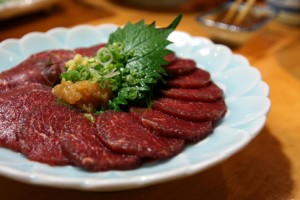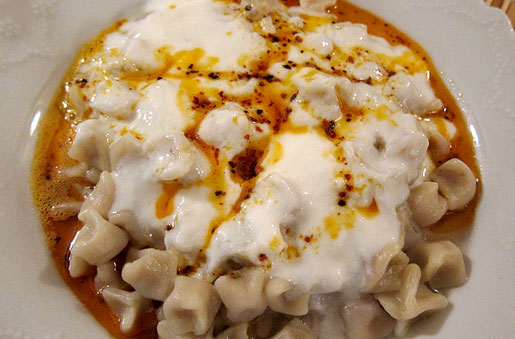
Manti, steamed dumplings of horse, pumpkin, and hot pepper smothered in cheese, down home cooking in Kazakhstan
“I’m so hungry I could eat a horse.”
We’ve all heard the phrase, and it comes from when horse was on the menu. It was rather significant phrase to me as a kid because I grew up with horses, usually five occasionally six. They were my mother’s hobby and the main reason why I spent some 13 summers of my youth haying until I joined the army. I know horses, haying and ground hornets well. I also know it take one huge hole to bury a dead horse. It’s not a hole you dig by hand. Want a reference point? Dig a hold to bury a car. That’s about right except you have to make it deep or carnivores will dig down to it. Even getting a dead horse to the hole is a chore particularly if it dies in a stall in the barn.
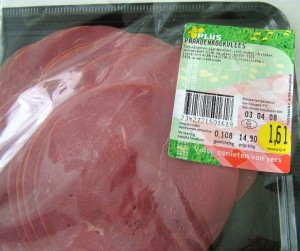 Not only did my mother bring home live horses but horse meat as well. We bought it in the butcher store occasionally. It had to be separated from the beef — other side of the store — but there it was, several different cuts catering to the Canadian shoppers. In fact, horse meat was on the menu at the Harvard Faculty Club up until 1983. It was a common food in the U.S. during WWII and was consumed in quantity because it was not rationed. Archaeologists tell us early man hunted and ate horses. They became beasts of burden much later. Horses are called the noble beast because they will always try to do what you ask of them.
Not only did my mother bring home live horses but horse meat as well. We bought it in the butcher store occasionally. It had to be separated from the beef — other side of the store — but there it was, several different cuts catering to the Canadian shoppers. In fact, horse meat was on the menu at the Harvard Faculty Club up until 1983. It was a common food in the U.S. during WWII and was consumed in quantity because it was not rationed. Archaeologists tell us early man hunted and ate horses. They became beasts of burden much later. Horses are called the noble beast because they will always try to do what you ask of them.
Here’s a bit of trivia for you: Henry Ford loathed horses. He hated them. He said he worked hard to develop the car to free man from the Culture of Horses. Ponder that. Here’s a man who helped change an entire society — the world — because he hated a particular animal. Then again, someone who loved horses, which were the main muscle of the day, could have developed the car because they wanted to save horses from all that work and suffering. Either way the internal combustion engine put an end to the horse culture.
The banning of horse meat goes back to the eighth century. Popes Zachary and Gregory III both told Saint Boniface to forbid his missionaries to eat horse meat, as it had a strong correlation to the Germanic pagan rituals which Christians were trying to eradicate. The Germans of old liked their horse meat, and still do and until 2005 the United States was the major exporter of resturant grade horse meat.
Buying horse meat and slaughtering horses for commercial meat was illegal in the United States from 2006 until Nov. 18th, 2011, though it was available in other countries during those times. Horse meat could be in US markets in early 2012 but it was sure to create public controversy. The only legal impediment nationally is funding federal meat inspectors. However, California and Illinois have banned the slaughter of horses for human consumption, and more than a dozen states tightly regulate the sale of horse meat. Not so elsewhere.
In Japan there’s a sashimi dish made of horse meat. Horse is very popular in France. From a culinary point of view horse meat is lean, much along the taste and texture of moose, deer or kangaroo. It is a gray colored, dry, sweeter than beef, and improves in flavor greatly by the inclusion of fat when cooking or from a marinade. Fresh is far better than frozen.
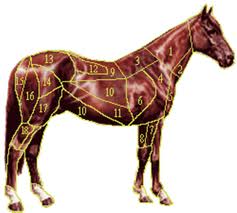 As mentioned elsewhere most people would not eat their pets, regardless of what those pets are. When I meet someone who has a reptile for a pet I have to remind myself of that least I make a few misplaced iguana shoes or turtle soup jokes. Though we ate horse meat eating our horses when they died was not an option. We buried Ginger, Bonnie, Cheeko, Rusty, Mary and Sootie. And I am sure all these years later I would be bothered by the deed had we eaten those big, lovable pets. However, in hindsight all these years later, we also buried a lot of meat. Combined they weighted some 6,000 pounds. Even after dressing that would be three to four thousand pounds of meat, two tons of it. That’s a lot of food to put into the ground. If raising cattle that we eat is a waste of land resources then what is burying a pet horse?
As mentioned elsewhere most people would not eat their pets, regardless of what those pets are. When I meet someone who has a reptile for a pet I have to remind myself of that least I make a few misplaced iguana shoes or turtle soup jokes. Though we ate horse meat eating our horses when they died was not an option. We buried Ginger, Bonnie, Cheeko, Rusty, Mary and Sootie. And I am sure all these years later I would be bothered by the deed had we eaten those big, lovable pets. However, in hindsight all these years later, we also buried a lot of meat. Combined they weighted some 6,000 pounds. Even after dressing that would be three to four thousand pounds of meat, two tons of it. That’s a lot of food to put into the ground. If raising cattle that we eat is a waste of land resources then what is burying a pet horse?
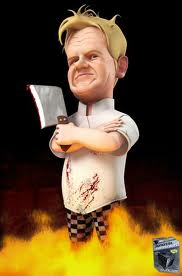 Horses have cuts just as beef does, with more or less tender parts. We usually bought steaks but they ended up in stews more often than fried. Without some tenderizing and fat the frying pan does not treat horse meat well. The stews were excellent. Indeed, my mother loved New England Boiled Dinners. We had that virtually every Sunday for every Sunday I ever lived at home — without exception — and more than once there was a chunk of horse meat in there growing tender by the long, moist heat.
Horses have cuts just as beef does, with more or less tender parts. We usually bought steaks but they ended up in stews more often than fried. Without some tenderizing and fat the frying pan does not treat horse meat well. The stews were excellent. Indeed, my mother loved New England Boiled Dinners. We had that virtually every Sunday for every Sunday I ever lived at home — without exception — and more than once there was a chunk of horse meat in there growing tender by the long, moist heat.
Foul-mouth chef Gordon Ramsay says horse is healthy, packed with half the fat of beef and has far more Omega 3 fatty acids than beef. He describes it as “slightly gamey” and “packed with protein.” I don’t remember it being gamey at all.
While there are legitimate reasons not to eat horse on the positive side, horses don’t have mad cows disease.
Horse meat with mustard
- 1 1/2 lb. (675 g) lean ground or cubes horse meat
- 1 Tbsp. (15 mL) olive oil
- Tomato Sauce
- 2 Tbsp. (30 mL) olive oil
- 1 cup (250 mL) tomato sauce
- 1 Tbsp. (15 mL) brown sugar or honey
- 1 Tbsp. (15 mL) mustard
- 1 Tbsp. (15 mL) Worcestershire sauce
- 1 medium onion, thinly sliced
- Salt and pepper to taste
Preparation
In a pan, sauté the horse meat in oil. Drain the meat and throw out the cooking fat. Put the meat back in the pan. In a glass bowl, mix all the sauce ingredients. Pour into the pan over the meat. Cover and simmer for one hour. Serve with pasta and sprinkle with Parmesan or Pecorino cheese.



